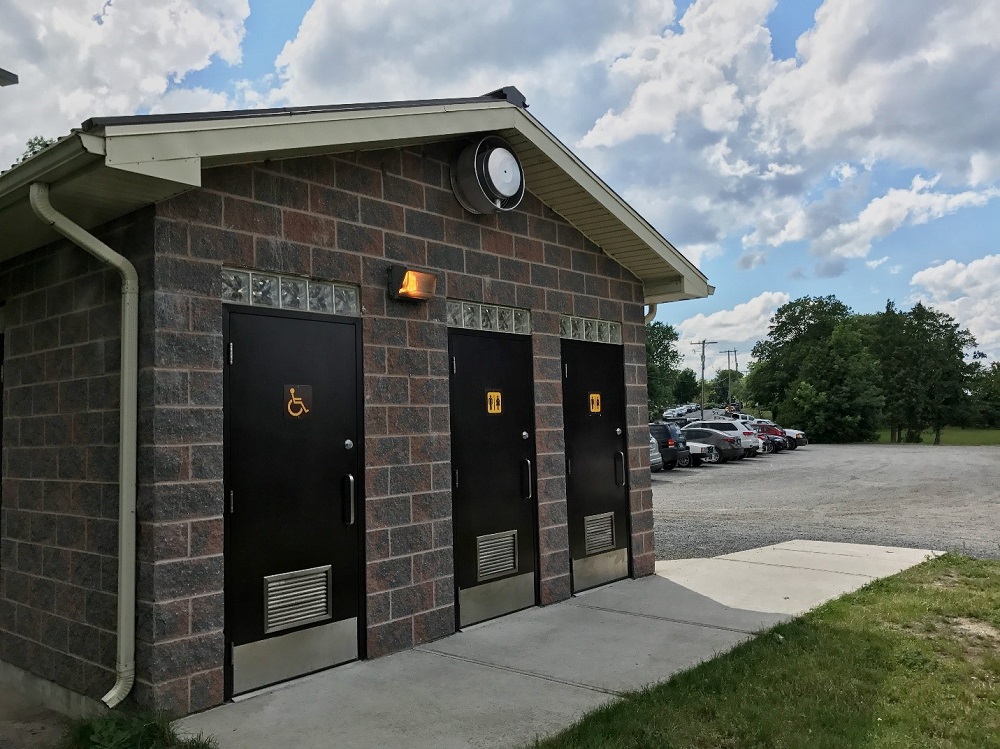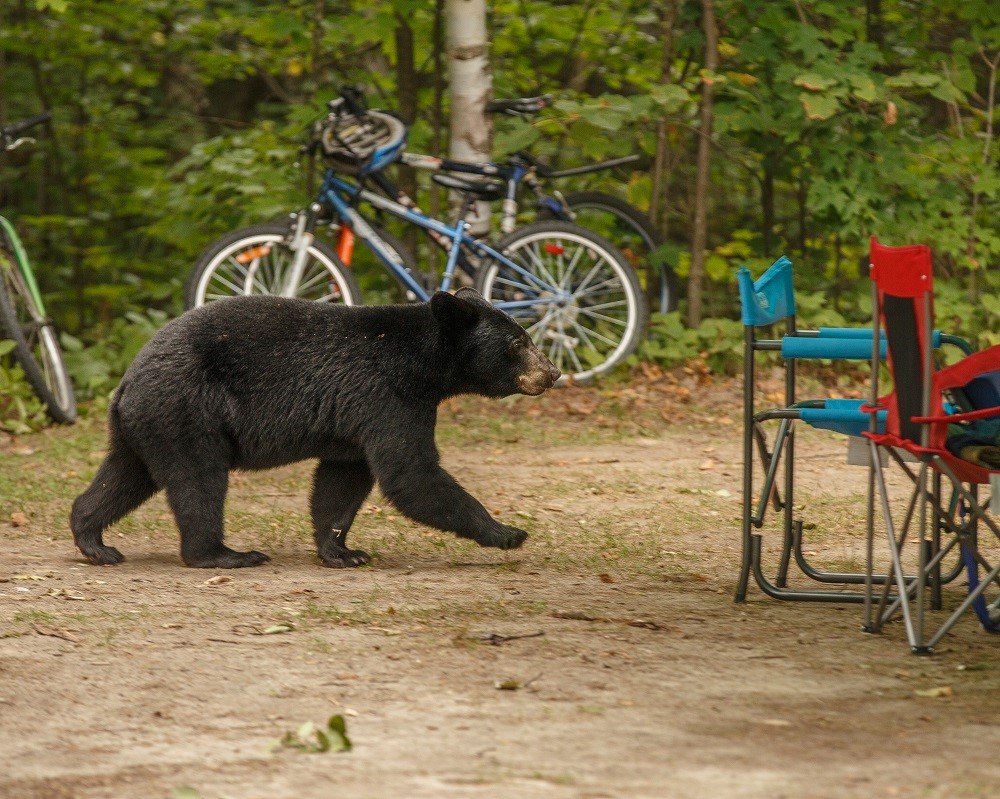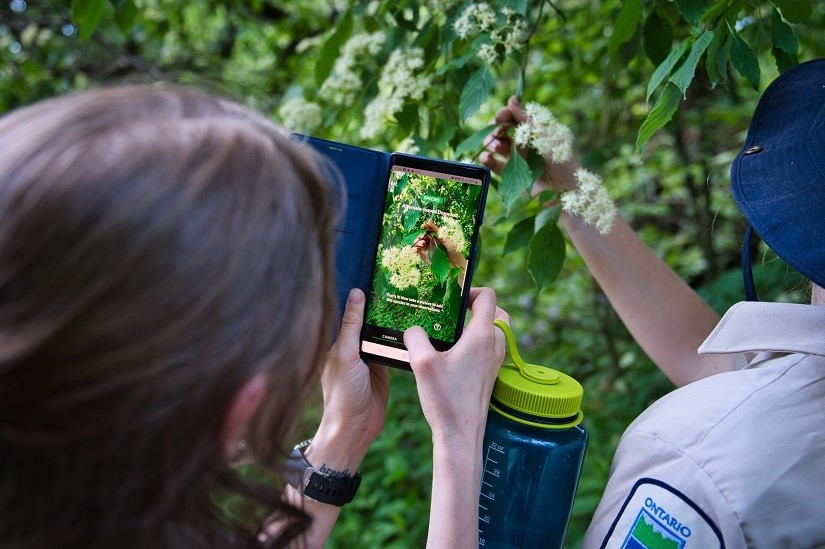Are you new to parks, or maybe a park veteran looking to brush up on your knowledge?
We’ve assembled a handy guide to all the terms you’ll need to know and understand before you visit the park…
Camping
Car camping: Also known as frontcountry or campground camping. This style of camping involves driving straight to your campsite, and parking your vehicle to set up your tent or trailer. Car camping is always in a campground, and will be within a short distance of amenities like water taps or washrooms.

Backcountry camping: Backcountry camping, also referred to as interior camping, is a style of camping that leaves the car behind at the trailhead or access point. You take everything you need on your trip with you in your pack. This means you don’t drive to the campsite. Instead, you canoe, boat, portage, or hike to your site. In a lot of cases these are isolated areas in wilderness type environments where park users are on their own without the aid of park staff.

Seasonal camping: Seasonal camping refers to campsites which are booked for longer stays, usually for an entire season. These are popular in our northern parks. To learn more about seasonal camping, please visit our website.
Group camping: Group campsites are large, designed to accommodate groups of 20 to 50 people. Choosing a group site is a great way to camp with a large group (for instance, a youth group or family reunion) and not be separated on different sites.
Roofed accommodations: We use this term to refer to all of our structural accommodations available for reservation, such as yurts, cabins, and cottages. For a full list of roofed accommodations, visit our website.

Electrical site: Also sometimes referred to as a hydro site. A campsite with access to a 15/30 amp electrical pedestal. Often pedestals are shared between two campsites. You should plan on bringing a long extension cord with you to reach the pedestal.
Day visitation
Day use: Visiting a park for a day trip, typically between the hours of 8:00 am to 10:00 pm (however, hours do vary by park so check the individual park page before you head out). Many day-use visitors spend time at the beach, hiking trails, or paddling. Daily vehicle permits are available for purchase upon arrival.
Select provincial parks offer advance bookings for day use. We strongly recommend securing your daily vehicle permit in advance for all our participating parks. Here’s how to book.
Seasonal or annual pass: Frequent visitors may prefer to buy a seasonal or annual pass, rather than buy a daily vehicle permit on each visit.
Reminder: if visiting one of the participating parks that offers advance daily vehicle permits, we strongly recommend using your seasonal permit to secure your spot in advance.
Park facilities
Comfort station: An indoor washroom found in many campgrounds at Ontario Parks. Comfort stations have running water, flush toilets, with the majority having showers.

Vault privy: A non-flush toilet found in many locations at Ontario Parks. Also known as a vault toilet or an outhouse.

Sanitation station: Also known as a trailer dumping station or trailer dump-and-fill station. This is where RVs can dispose of their black and grey water following a stay at the campground. RVs can also fill their water tanks up at the sanitation station. Please follow the instructions on the signs at the station. If you have questions, please ask a staff member.

Thunder box: A toilet found in the backcountry. A thunder box is an open air wooden box placed over a hole in the ground. The name “thunder box” comes from the loud sound the lid makes as it closes, which usually echoes across a quiet backcountry campsite.
Potable water: Water that is suitable for drinking, and is tested on a regular basis and overseen by the local health unit. Unless a sign is posted saying otherwise, all campground water taps provide potable water.

Non-operating parks vs operating parks: Non-operating provincial parks offer limited recreational experiences, fewer facilities, and generally no dedicated staff or fee collection. These are generally located in undeveloped wilderness areas.
Operating parks offer a variety of services and facilities, such as campground camping, roofed accommodations, washrooms, and Discovery programs, and charge fees.
Visitor Centre: An indoor space or park building dedicated to providing visitors with information about the park. These may also be referred to as museums or interpretive centres.

Park rules
Full fire ban: When a lack of rainfall and hot weather conditions combine, our province is at heightened risk of wildfires. As a result, parks may implement fire bans to protect the natural environment and ensure the safety of our park visitors. During a full fire ban, no open fires are permitted within the park at any time. For more information on what equipment is allowed during a fire ban, check out this blog.

Partial fire ban: Fires may be permitted in the park at certain times of the day/night with a number of restrictions. Details will be listed on our Alerts page.
Beach posting: Beaches are posted as unsafe for swimming due to elevated bacterial counts. Beach postings will be removed when test results show bacterial levels are acceptable. Active beach postings are listed here.
Bear safe/Bear Wise: A “bear safe” campsite means there are no animal attractants left out. This includes all food items, as well as scented products like sunscreen or insect repellent. Make sure they are always locked in your car when you are either sleeping or not on your site!

Science and education
Discovery Program: Nature education programs to discover and connect with the best of Ontario’s natural and cultural history. Programs are led by experienced and knowledgeable Discovery Rangers, and offer exciting experiences in more than 70 parks across Ontario. Contact your local park for more info!

Ecological Integrity: The guiding legislation for Ontario Parks, the Provincial Parks and Conservation Reserves Act, 2006 (PPRCA), defines ecological integrity as “a condition in which biotic and abiotic components of ecosystems and the composition and abundance of native species and biological communities are characteristic of their natural regions and rates of change and ecosystem processes are unimpeded. 2006, c. 12, s. 5 (2).” The heart of ecological integrity is the “naturalness” of an area.
Healthy ecosystems sustain healthy people and a healthy economy. Our work to maintain and improve the ecological integrity of our parks supports Ontario’s biodiversity, clean air, productive soils, nutritious foods, and fresh water.
Community science/citizen science: Citizen science and community science are terms that are meant to acknowledge the important work that volunteers contribute to scientific research and understanding. Ontario Parks uses data from programs such as iNaturalist, Christmas Bird Counts, EDD Maps, and many other programs. Community scientists are helping us to protect our wonderfully large and complicated parks system.

Nature reserves: Many of our parks contain areas that have been chosen for special protection. They may provide important habitat for breeding birds, rare plants, or a special ecosystem. Many of our park trails or beach access points go through nature reserve zones, which is why it is extra important to stick to the trail whenever you’re in a park.
